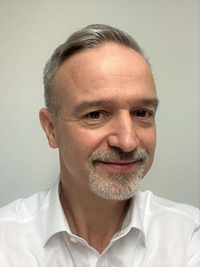Green steel made with hydrogen as reductant Prof. Dierk Raabe, Max-Planck Institut für Eisenforschung, Düsseldorf, Germany
| When: | We 20-04-2022 04:00 |
| Where: | Zoom link: https://zoom.us/j/93253869193?pwd=OXpKV2dicmJ2YkV0akVIZjBUVWhJQT09 |
The MSM and PT groups (PIs: Dr. Maresca and Dr. Kyriakou) present: Green steel made with hydrogen as reductant
Prof. Dierk Raabe, Max-Planck Institut für Eisenforschung, Düsseldorf, Germany
Abstract
More than 1.8 billion tons of steel are produced every year, making it the most important alloy in terms of volume and impact. While steel is a sustainability enabler, through lightweight car parts, wind farms and magnets, its primary production is not. Iron is reduced from its ores using carbon. This produces >2t CO2/t of steel, standing for 35% of the global CO2 emissions in manufacturing. These emissions can be reduced when replacing carbon by hydrogen or its carriers as reductant [1,2]. The lecture presents some recent progress in understanding the key mechanisms of hydrogen-based direct reduction and hydrogen-based plasma reduction [3-5]. The kinetics of the reactions strongly depend on mass transport kinetics, nucleation during the multiple phase transformations, the oxide’s chemistry and microstructure, and on damage and fracture associated with the phase transformation and mass transport phenomena occurring during reduction. Understanding these effects is key to make hydrogen-based reduction of iron ores commercially viable, enabling massive CO2 reductions.
[1] youtube: Sustainable Metallurgy and Green Metals https://www.youtube.com/watch?v=1kihsaLSxv0
[2] Raabe, Tasan, Olivetti (2019) Nature 575:64. https://www.nature.com/articles/s41586-019-1702-5
[3] Kim et al. (2021) Acta Materialia 212:116933 https://www.sciencedirect.com/science/article/pii/S135964542100313X
[4] Souza Filho et al (2021) Acta Materialia 213:116971 https://www.sciencedirect.com/science/article/pii/S1359645421003517 [5] Souza Filho et al. (2022) J Clean Prod 340:130805 https://doi.org/10.1016/j.jclepro.2022.130805
Bio
Dierk Raabe studied music (conservatorium Wuppertal), metallurgy and metal physics (RWTH Aachen). After his doctorate 1992 and habilitation 1997 at RWTH Aachen he worked at Carnegie Mellon University (Pittsburgh) and at the National High Magnet Field Lab (Tallahassee) and joined Max Planck Society as a director in 1999. His interests are in phase transformation, alloy & segregation design, hydrogen, sustainable metallurgy, computational materials science and atom probe tomography. He received the Leibniz award (highest German Science award) and an ERC Advanced Grant.

